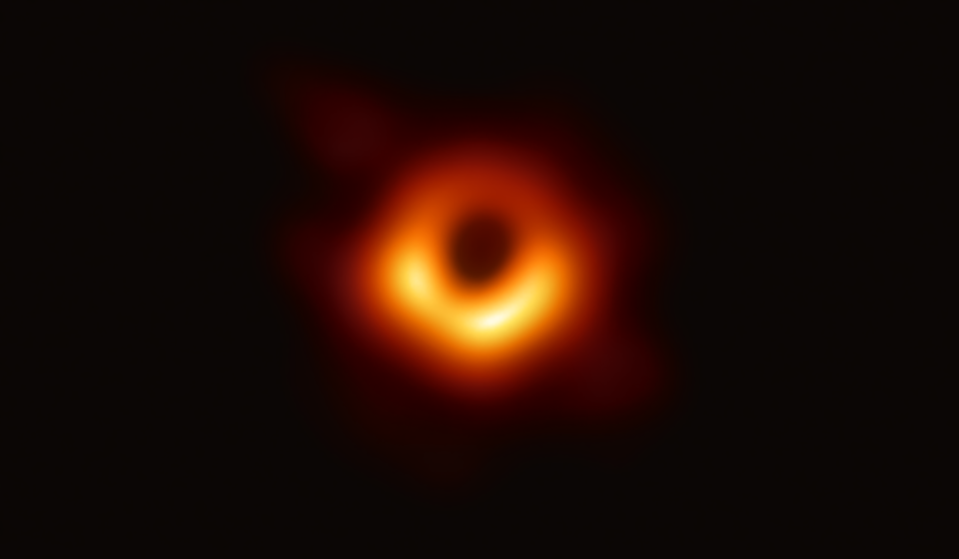
Curious Kids is a series for children of all ages. If you have a question you’d like an expert to answer, send it to curiouskidsus@theconversation.com.
Why are there small and large black holes? Also, why do some black holes have invisible black holes and others have a white outline? – Sedra and Humaid, Abu Dhabi, United Arab Emirates
Black holes are dense astronomical objects whose gravity is so strong that nothing, not even light, can escape. Anything that crosses the limit of a black hole’s gravitational influence, called the event horizon, will fall into the black hole. Inside this deep, compact pit, he is not seen again.
Black holes litter the universe. A number of smaller black holes are randomly scattered throughout galaxies such as our Milky Way. Other massive ones, known as “supermassive” black holes, are located at the center of galaxies. They can weigh between a million and a billion times the mass of our Sun. So you might be wondering: How can astronomers see something so dark and so big?
I am an astronomer who studies the first supermassive black holes that formed in our universe. I want to understand how black holes form and what kind of astrophysical neighborhoods they grow up in.
Types of black holes
Let’s talk about how black holes start their lives. Two famous scientists, Albert Einstein and Karl Schwarzchild, first proposed the idea of a black hole. They thought that when a great star dies its heart may shrink and shrink until it collapses under its own weight. This is what we astronomers call a “stellar mass black hole,” which is just another way of saying that it’s relatively very small.
Stellar mass black holes are only a few times that of our Sun. Supermassive black holes, however, are more of a mystery. They are millions of times heavier than our Sun, and are packed into a small area about the size of our solar system. Some scientists think that many stars may have formed supermassive black holes by colliding and collapsing at the same time, while others think that they may have started growing several billion years ago.
Growing black holes
What do black holes look like? Most of the time, they are not actively growing, so they are invisible. But we can say they exist because stars can still orbit around them, just like the Earth around the Sun.
When an invisible object is orbiting at high speed, scientists know that there must be a supermassive black hole at the center. This is the case with our nearest supermassive black hole, located right in the center of the Milky Way – safely millions of miles away.
Meanwhile, as a hungry black hole eats the gas in a galaxy, it blows that gas up until you see a bright ring of X-rays, optical light and infrared light around the black hole. When it exhausts all the fuel near the event horizon, the light fades again and becomes invisible.
Outlines around black holes
One of the most famous “white outlines” is the image of a black hole from the movie “Interstellar.” In that film, they wanted to show the white-hot, glowing ring of gas falling into the actively growing black hole.
In real life, we don’t get such a close view. The best image of the ring around a real black hole comes from the Event Horizon Telescope, which shows scientists the supermassive black hole at the center of a galaxy called M87. It might look weird to you, but this donut is the sharpest image ever taken of something to date.


There are many types of black holes out there in the universe. Some are small and invisible, and some grow to enormous size by consuming objects inside a galaxy that shine brightly. But don’t worry, black holes can’t absorb everything in the universe – eventually nothing is close enough to the black hole to fall in, and it will become invisible again. So you are safe to continue asking questions about black holes.
Hello, strange children! Have a question you’d like an expert to answer? Ask an adult to send your question to CuriousKidsUS@theconversation.com. Please tell us your name, age and the city where you live.
And since curiosity has no age limit – adults, let us know what you think too. We won’t be able to answer every question, but we’ll do our best.
This article is republished from The Conversation, a non-profit, independent news organization that brings you reliable facts and analysis to help you make sense of our complex world. It was written by Jaclyn Champagne, University of Arizona
Read more:
Jaclyn Champagne receives funding from the National Science Foundation and the Space Telescope Science Institute.